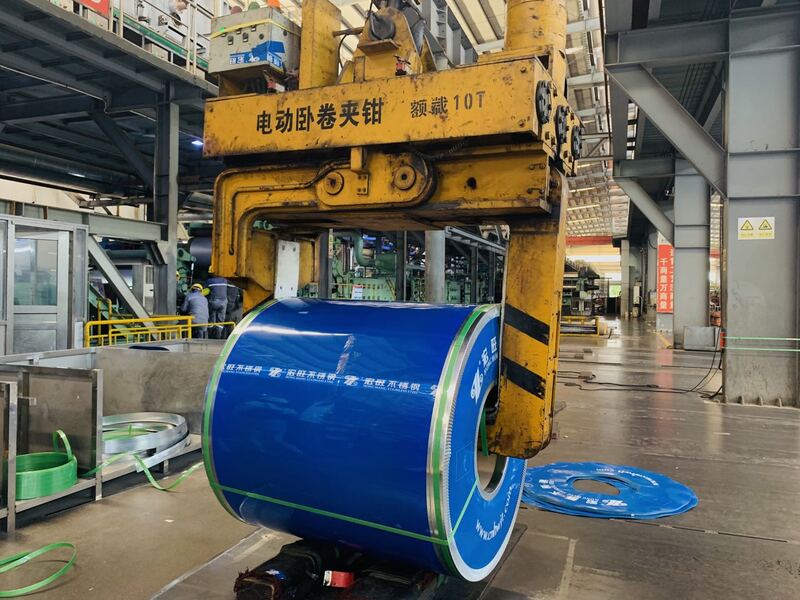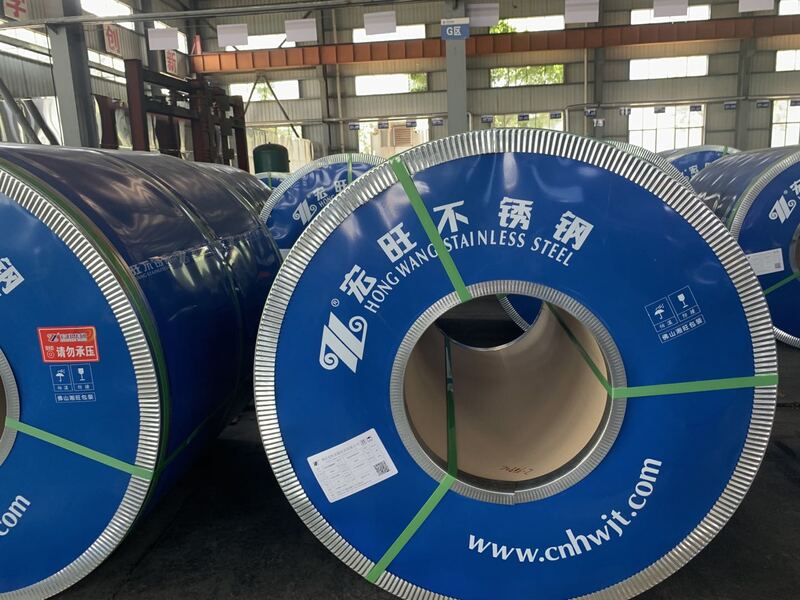
Current Location : Home > News > Industry News > Stainless steel coil applications and precautions for use
Stainless steel coil applications and precautions for use
Time:2021-09-22
Source:Wuxi Hongwang
Hits:260
What is the approximate length of a typical stainless steel coil?
1. The cold plate is processed by cold rolling, and the surface has no oxide skin, and the quality is good. The hot plate is processed by hot rolling, and the surface has oxide scale, and the thickness of the plate is lower.A part of the home to the air conditioning cleaning also does not pay high attention to, some people immediately wipe the air conditioning shell clean think clean up the past, in fact, there are also many components must be cleaned, if not cleaned up for a long time will cause harm to the body. Because of the uniqueness of the standard natural environment in the work of fan coils, it is stipulated that it is in the application of the whole process in addition to carry out general maintenance, but also need to pay particular attention to the following cleaning and disinfection sterilization work in: in the cleaning of central air conditioning before the need to prepare the required supplies and detergent, it is best to buy special type of air conditioning cleaner or cleaning powder.What is the approximate length of a stainless steel coil? You can work it out. Generally, a coil will not give you the length, it will only tell you how wide it is, how thick it is and what material it is made of. How much does a roll weigh. That's the equivalent of telling you the length. If it's stainless steel, you divide the weight (in kilograms) by 7.93, divide the width, (in metres). Divide by the thickness (in millimetres).The figure that comes out is the length. Depending on the actual use. To divide by a loss. Because here, if the plate thickness is thin, or if you need a plate with a high surface requirement, then the outer layer will be extruded, deformed and scratched during transport, which is inevitable, and even in the process of your use, there will be losses due to processing errors. So you have to estimate it. Don't be too big, too big will cost more, depending on your specific use.

What are some common uses for stainless steel coil?
Most of the uses of stainless steel coils require that the original appearance of the building is maintained over time. When determining the type of stainless steel coil to be used, the main considerations are the aesthetic standards required, the corrosiveness of the local atmosphere and the cleaning regime to be applied.
However, other applications are increasingly simply seeking structural integrity or impermeability. Examples include roofs and sidewalls of industrial buildings. In these applications, the cost of construction to the owner may be more important than aesthetics, and surfaces that are not very clean are fine. The use of 304 stainless steel coil works reasonably well in dry indoor environments.
However, in rural and urban areas it needs to be cleaned frequently if it is to retain its appearance outdoors. In heavily polluted industrial and coastal areas the surfaces can be very dirty and even rusty. However, to obtain the aesthetic effect in outdoor environments, nickel-containing stainless steel coils are required.
Therefore, 304 Stainless steel coil is widely used for curtain walls, sidewalls, roofs and other architectural applications, but in highly aggressive industrial or marine atmospheres, 316 stainless steel is preferable. There are several design guidelines that include both 304 Stainless steel coil and 316 Stainless steel coil.
Because the "duplex" stainless steel 2205 combines good atmospheric corrosion resistance with high tensile and elastic strength, this steel is also included in European guidelines. Product shapes, in fact, stainless steel is manufactured in a full range of standard metal shapes and sizes, but there are also many special shapes.
Commonly made from sheet and strip, special products are also produced from medium-thick plates, for example, to produce hot-rolled structural sections and extruded structural sections. There are also round, oval, square, rectangular and hexagonal welded or seamless tubes and other forms of products, including profiles, bars, wire rod and castings. In order to meet the aesthetic requirements of architects, a variety of different commercial surface finishes have been developed.

What should I pay attention to in my daily life with stainless steel coils?
Stainless steel coils play an important role in everyday life. From boats to trains to skyscrapers, there are important alloying elements that help stainless steel perform better in a variety of applications. Generally speaking, any mixture of two or more metals is referred to as an "alloy steel".Stainless steel is also an alloyed steel, and some of the metal elements that are important in forming the alloy include: iron, nickel, chromium and cobalt. Corrosion-resistant elements help stainless steel to inhibit the rusting process. The following five elements are key to these substances.
1. Two key alloying elements to form stainless steel
Naturally no alloy is formed. Of course some accidents can happen. For example, gold miners occasionally found alloys in the ground where gold and silver could be mixed together, and since then man has learned how to use alloys. Many early societies created cooking utensils and other household items, most of which were made of copper, a soft metal. During the Bronze Age, metalworkers developed a way to make corrosion-resistant alloys that lasted, made from copper mixed with tin, bronze having greater strength and corrosion resistance.
Steel itself is mixed with iron and a small amount of carbon, unfortunately, iron rusts over time as the elements react with carbon in air and water. However, by adding small amounts of nickel and chromium to the molten metal, scientists found that they could form corrosion-resistant alloys that would help prevent the problem of steel being prone to rusting. Since then the invention of "stainless steel" has changed the world.
2. Nickel alloys can make stainless steel more durable
Many Americans are using white metal nickels. Years ago, the US Mint added nickel to produce a stronger, more durable coin. The combination of chromium, nickel and iron helps to shape the steel even more and it resists high temperatures very well.
3. Nickel alloys can be magnetised very quickly
Unlike other metals, nickel can be magnetised very quickly. Therefore, nickel is not only an important component of corrosion-resistant stainless steel alloys, it also plays an important role in many magnets. By mixing nickel, cobalt and iron, manufacturers have created permanent magnet alloys for use in a variety of applications.
4. Chromium requires high temperature solid solution
Chromium alloys require a much higher temperature to melt. Solid chromium will not melt in a furnace unless the temperature reaches 3465 degrees Fahrenheit or higher. Its high-temperature resistance is a very useful requirement for refractory steels, and is used successfully in applications such as aircraft and high-speed train engines.
5. Chromium can form a ruby red colour
Many people appreciate the brilliant red colour of rubies. Surprisingly, the chromium ore contained in nature can also form this colour. Chromium alloys not only play a vital role in the corrosion resistance of stainless steel, but also its bright colour combined with other metals in two forms, including yellow, green or red, etc.
Tags: approximate length of a stainless steel coil, common uses for stainless steel coil, uses of stainless steel coil
Related News
The difference between 430 and 304 stainless steel
2022-12-01Current situation of transformer market under energy transition
2024-03-26Stainless steel surface treatment process- Brushed
2020-11-10Development prospect of electrical steel industry
2023-09-18Key points of special-shaped bending of stainless steel plate
2021-08-19There are so many application for Stainless Steel Thick Plate!
2022-04-11






